
Review: Swivl Video Lecture Capture System
Back in the day, if you missed a class… tough luck. Either you hit the books or did your best to catch up in the next class.
Review:/ Andrew Bennett
More recently, teachers have been recording video for their students. Very often these are static, locked-off videos with poor audio.
Swivl has come to the rescue. Starting with a great idea (a mount that allows camera tracking of a presenter) it’s expanded to a Swivl ecosphere, recognising the success of Swivl won’t be in selling a nifty gizmo so much as winning teachers’ hearts and minds. The homepage mission statement is: ‘Lifting achievement by expanding the focus of observations to students’.
I don’t even know what that means but I do know Swivl represents an affordable, nifty system that’ll save teachers time and result in highly-viewable video recording.
AYE ROBOT
Swivl consists of a three-part solution: a Robot, the Capture app and, tying these together, Swivl Cloud. It’s these three elements combined that makes Swivl such a useful product.
First up, let’s look at the ‘C Series Robot’. The Swivl doesn’t have an integrated camera, instead it relies on taking your Apple or Android smart device and giving it the power to follow you around the classroom. The robot holds your device loaded with the Capture app and acts as your very own camera assistant. It’s able to track your every move in a full 360° arc and a 25° tilt range.
The robot looks like a Roomba and R2-D2’s love child. Measuring around 13cm in diameter, and 8cm high, the robot is small enough to fit just about anywhere. It only has two buttons, a handful of status LEDs and a couple of plugs for power and connecting to the the tablet/phone that it’s holding. It has a clever ‘shim’ system to hold your device firmly in place. The main ‘claw’ that holds the device easily clicks out and allows one of three shims to be inserted, these provide different levels of support for your tablet. We tested it with an iPad, and while it had to be removed from its case, the Swivl held it quite securely.
MORE INFO
PRICE
Swivl C1 $899.95; C3 $1219.95
C5 $1559.95 (Base + Primary Marker + 4x Markers + 2x USB Marker charger)
CONTACT
AP Tech: (02) 9452 6001 or www.aptech.com.au

FOLLOW ME
Remember the technological wave that hit lounge rooms in the mid 2000s from that Japanese game maker? The one that turned lounge rooms into tennis courts and golf courses? [Yes, wii remember Andy — Ed.] Well, the Swivl Robot uses much the same tech to track the presenter around the room — an infrared line of sight system. This means the presenter needs to use the included ‘marker’ and either wear it around their neck or hold onto it during the presentation. This marker also acts as a wireless microphone (in the DECT 1.9GHz range) used to record the audio of the presenter. In fact, the Marker takes care of most presentation functions, including starting/stopping the recording, starting/stopping tracking and changing slides within the Capture app.
I found positioning the Robot in the front row (say, 1.8m from the lecturer, next to the teacher’s pet) provides a good visual balance — enough of the teacher; enough of what’s on the ‘board’. (The best distance will vary based on the optics of your smart device was used and you can safely station the Robot up to 10m away, if so desired.) Underneath there is a standard ¼-20 mounting thread, the type found on any standard camera tripod. This one little thread opens up an endless world of temporary and permanent mounting options — good thinking Swivl.

MORE POWER
Portability is central to the Swivl’s robot nature. The base unit has a lithium battery (quoted six hours of life), giving the teacher the freedom to place it optimally rather than where the nearest GPO is located. The device it’s holding, by its very nature has a portable power source. The marker is equipped with its own built-in battery and is charged by inserting it into its ‘home’ location within the Swivl.
CAPTURE APP
The Capture app’s name undersells it by some measure. But at its core Capture does indeed allow you to record lectures. Upon launching for the first time you’re prompted to create an account and provided with a in-depth tour of how the app works.
Upon first glance, it would be easy to assume that Capture is not so different to the camera app, however it has some hidden superpowers. Wouldn’t it be great if your tablet could be used as a pseudo slide teleprompter? Guess what, it can! It’s possible to have the slides being shown on your device’s screen, to navigate them with the marker, and to synchronise these with the video footage. What about if you also want to present these slides? Swivl has got that covered as well: pair an iPad with Apple TV and connect that Apple TV to the device you wish to present on and instantly you’re set up. No Apple TV? A gaggle of dongles and you should be able to connect in as well.
One downside to note: the slides are a little ‘low res’. My guess is that the slides are converted to JPEGs when uploaded (there are signs of JPEG artefacts even after uploading a simple Powerpoint presentation).
CLOUD
Swivl Cloud provides a browser-based platform for uploading, editing and sharing lectures. It fully integrates into the Swivl Capture App. It provides a quick and simple way of uploading slides into the Swivl by using a web browser on any standard computer and accepts a wide variety of file formats.
Once lectures have been captured using the App, they can be uploaded (either automatically or manually) to the Cloud Library. In this library, your catalogue of presentations can be organised into folders and sorted. Basic editing of the slides in a presentation can also be performed right inside of the browser. Functions include: changing the timings of individual slides, swapping slides out for alternative ones or removing slides completely, along with trimming the video as required. (This means you can decide whether or not to leave in or edit out that standing ovation you received at the conclusion of your lecture.)
SHARE WITH THE WORLD
Once you’ve performed those basic edits you have the option of how the final video will look alongside your slides: whether to employ a PIP style, where the slides are larger and the video is smaller, or opt for side-by-side approach where the slides and video content are roughly the same size. Publishing the video is easy with a selection of built-in sharing options. Only want to share to a selection of email addresses? Can do. Want to set up a group and share often to that group? That’s available. Want to create a private link and share that link around however you see fit? Yep, that’s there. What about embed the video into a website or LMS? That feature is also at your disposal.
EARS EVERYWHERE
The Swivl has even more tricks up its sleeve. Multiple markers can be assigned to the robot and can record simultaneously. This can provide educators with the ability to review a lecture and listen in on where students may or may not have had issues. It also solves that problem of ‘I can’t hear the questions from the audience, only the answer’ usually associated with classroom video productions.
SWIVL PRO+
If one Swivl is good… what about a small army of them, across the classroom? Swivl Pro+ allows for one to four iOS devices to be connected with the Swivl app (the robot is not required) to the teacher’s master iOS device. Slides presented on the teacher’s Swivl are simultaneously presented around the classroom on the student’s devices, and the video from the student’s devices are recorded along with the master iOS device.
All of these video sources can then be combined in the Swivl Cloud to create a multi-camera interactional view of the classroom.
FLIPPING THINGS ON ITS HEAD
Technology has powered a new style of teaching known as the ‘flipped classroom’, where students ‘homework’ is to watch a lecture, and then to perform the tasks of answering questions and solving problems (that was traditionally set as ‘homework’) within the classroom with the support of peers and the teacher. Almost overnight, teachers have had to become amateur video producers. Technology such as the Swivl adds a level of sophistication to the production quality of such ‘flipped lectures’. Teachers flying solo are able to create quality lectures within the Swivl ecosystem to aid in teaching students, without the video editing learning curve or the expense/inconvenience of a camera assistant. Swivl has everything covered.
Swivl is a fully-featured end-to-end solution helping educators create quality video recordings of lectures. No longer do lectures need to be a single wide shot of the entire front of the room. Instead they can have a level of interest and movement, with a robot that follows the lecturer, along with a simple way of combining the video of the lecturer and any accompanying slides in an easy to distribute package. The ease of use ensures that educators don’t have to waste time setting up and configuring, and its portability means it can literally end up in any classroom environment.
Speaking of homework; it’s easy to tell who else has done its homework: Swivl R&D has clearly spent time with the teaching profession. Swivl is new. So new, in fact, it feels like there’s a new feature coming out every week. And there are a few kinks to iron out. But the education sector’s enthusiastic response to Swivl (clearly evident on its blog page) endorses the fact it has got the fundamentals right.
Swivl’s Goal: ‘To create a teacher driven movement with the potential to change anything using individualised observations.’
I don’t know what that means either. But I can report from a systems point of view, Swivl has the right combination of ease of use, features, and presentation quality. And I’ve no doubt it’ll only get better. Swivl knows the importance of getting its system in the hands of schools and colleges, so I wouldn’t hesitate to contact the Australian distributor AP Tech for an evaluation kit.


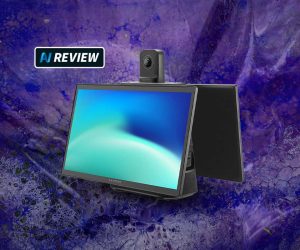


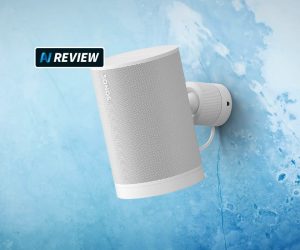

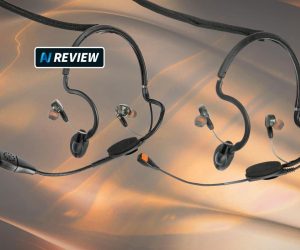
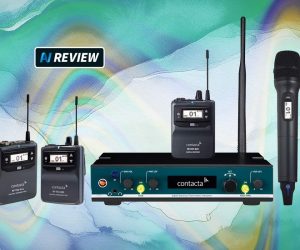



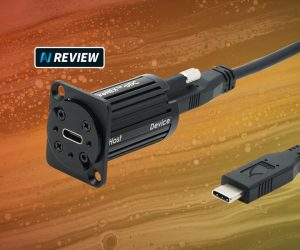


RESPONSES